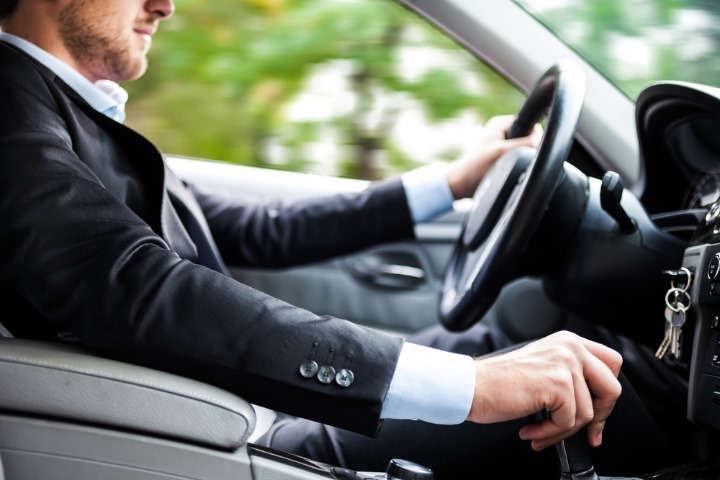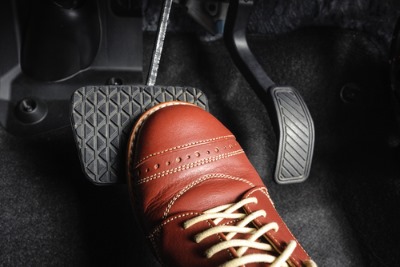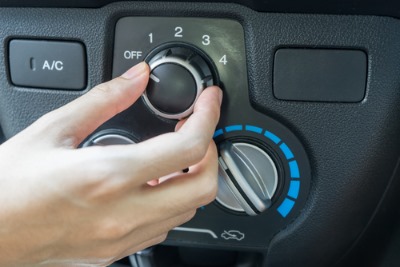8 Ways to Boost Efficiency and Be a Better Driver
Aubrey Cohen

Have you ever compared your gas mileage to what your car is supposed to get and found your performance lacking? The problem could be how you drive.
Practicing good driving habits can keep you safer, keep your car insurance premiums low and make a big difference in fuel consumption. Here are eight ways to drive more efficiently.
1. Calm down.
“A green light does not signal the start of a NASCAR race,” writes the Union of Concerned Scientists on its website. “High-speed driving and jack-rabbit starts increase both fuel use and emissions.”
Toyota says it’s best to take about five seconds to accelerate up to 15 miles per hour from a stop. Popular Mechanics says you should ease up on the gas pedal if you see a stop sign, red light or traffic up ahead, rather than maintaining a steady speed until you get close to the intersection and then braking hard. You’ll save fuel and wear on your brakes.
CHECK OUT: What’s New in Safety Technology for 2016
These are a couple of ways you can avoid aggressive driving, which can decrease fuel efficiency by 5 percent while city driving and 33 percent on the highway, according to FuelEconomy.gov.
Aggressive driving also can raise your risk of an accident — and hike your insurance premiums. Usage-based insurance programs base rates in part on behaviors like rapid acceleration and hard braking, as measured by a device installed in your car.

2. Slow down.
Dropping your speed from 75 mph to 65 mph saves 13 percent on fuel cost, the California Energy Commission’s Consumer Energy Center reports.The Union of Concerned Scientists estimates the savings at up to 20 percent.
Driving more slowly is also safer in general. In 2014, 28 percent of driving fatalities were related to speeding,according to the National Highway Traffic Safety Administration. A2004 study found that, when speed goes down, the number of accidents or injuries declines in 95 percent of the cases, while when speed goes up, the number of accidents or injuries rises 71 percent of the time.
3. Engage cruise control.
Ever noticed you’re passing another driver on the highway repeatedly? One or both of you is not keeping a constant speed, meaning you’re accelerating needlessly and wasting fuel. Engage cruise control if the roads are dry — it’ll be easier to steady your speed and fuel efficiency.
4. Don’t idle.
Many newer cars will automatically kill the engine while your car is idling at stop lights. This can cut fuel use by around 5 percent, according to the Union of Concerned Scientists.
If your car doesn’t turn off the engine automatically, shut it down for stops longer than one minute, although you should avoid starting your engine more than 10 times a day, on average, FuelEconomy.gov advises.
RELATED: How Insurance Companies Determine Fault
5. Lighten up.
Heavier cars use more gas. Lugging around extra stuff in your back seat or trunk — like golf clubs, suitcases or equipment — reduces fuel economy by about 1 percent for every extra 100 pounds, according to FuelEconomy.gov. So clean out your car on the regular.
6. Take it off (the roof).
Roof containers are handy, but they also increase drag. A big cargo box (20 inches high by 40 inches wide by 50 inches long) can cut fuel economy by up to 8 percent in the city and up to 25 percent at highway speeds, according to a 2014 study. Rear-mounted cargo carriers are better, cutting fuel economy by about 2 percent in the city and up to 5 percent on the highway.

7. Don’t be cool, maybe.
Your car’s air conditioner boosts fuel costs by up to 21 percent, according to the California Energy Commission. So save the AC for when you really can’t stand the heat. It’s particularly helpful to turn off your AC when you’re driving up a hill, according to AAA. One caveat: Popular Mechanics reports that opening your windows creates extra drag that will cancel out the fuel savings from turning off AC, or even cost you more in fuel, above 55 mph.
8. Turn right.
UPS reports it has saved an estimated 10 million gallons of gas since 2004 by optimizing routes, and a big part of that is minimizing left turns off of two-way streets. That’s because turning left often means idling until there’s a break in oncoming traffic. Sometimes it’s better to make several right turns. A 2011 studyfound so called “superstreet” intersections, which eliminate left turns in favor of right-hand U-turns, reduce travel time by 20 percent compared with conventional intersections. Less travel time means less fuel use. These intersections also have 46 percent fewer reported collisions and 63 percent fewer collisions with injuries.
Add up these changes and you could boost fuel efficiency by 20 percent, or more. Based on averagegas mileage, miles driven per year andgas prices, that could save around $300 a year on gas. Think you’re already a fuel-efficiency star, or want to find out how you compare? FuelEconomy.gov can show you how to track your fuel economy and see how many miles per gallon other drivers get with the same car model. You can also buy a stand-alone fuel-economy meter or get them standard in some vehicles like hybrids. If you find you have room for improvement, try the tricks listed here.
